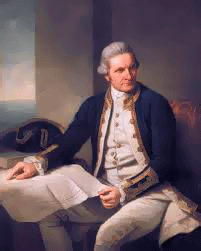News about maps
Digital cartography and GPS navigation
Mapstor news
This Day in History
Travelling with mapstor.com
This Day in History
4th December, 1674 Marquette founded the first European settlement
19th November, 1875 was born Hiram Bingham
18th November, 1832 was born Nils Adolf Erik Nordenskiöld
14th November, 1963 the island Surtsey was founded
11th November, 1729 was born Louis Antoine comte de Bougainville
12 July, 1776 James Cook went to the third voyage around the world
 On the 12th of July, 1776 James Cook, the captain, led the expedition on two ships, "Discovery" and "Resolution", had embarked on a voyage in search of trade route from the Pacific to the Atlantic Ocean. It was the third trip around the world of the English explorer and cartographer James Cook. The route passed around North America. During the voyage the expedition rediscovered the Hawaiian Islands, made a map of the northwest coast of America up to Alaska. Explorers were able to identify the location of American and Asian countries with respect to each other. James Cook carefully examined and mapped the insufficiently studied and rarely visited West Coast of North America, Atlantic and Pacific oceans.
On the 12th of July, 1776 James Cook, the captain, led the expedition on two ships, "Discovery" and "Resolution", had embarked on a voyage in search of trade route from the Pacific to the Atlantic Ocean. It was the third trip around the world of the English explorer and cartographer James Cook. The route passed around North America. During the voyage the expedition rediscovered the Hawaiian Islands, made a map of the northwest coast of America up to Alaska. Explorers were able to identify the location of American and Asian countries with respect to each other. James Cook carefully examined and mapped the insufficiently studied and rarely visited West Coast of North America, Atlantic and Pacific oceans.
In search of the Northwest Passage, explorers reached the Frozen Cape, where ships met on the ice. The ships were forced to turn south, and in November 1778 sailors disembarked in Hawaii. The natives mistook Cook for the god O-Rono, who according to legend, was supposed to come in Hawaii on a floating island. Among the Hawaiians began the struggle of soldiers and priests, as the divine origin of the captain was questioned. The situation worsened when incidents of theft became more frequent in the camp. In one of the skirmishes between the team and the Hawaiians on 14th of February, 1779 Cook was killed. Natives took his body with them. The next day, the priests, who were friends of Cook, with tears have brought travelers parts of the body, they received during the carve-up. Captain Clerk, who took command in his hands, allowed the sailors to get over with the islanders. Sailors dealt ruthlessly with those who met on, and burned the village. After fierce reprisals islanders who survived asked reconciliation and brought back the missing pieces of the body. The team with honor betrayed the remains in the sea.
Contemporaries evaluated the contribution of Cook to the development of geography and cartography ambiguously. So, Georg and Johann Forster, father and son, who accompanied Cook in the second voyage, as natural scientists, were under the influence of Rousseau's "natural" man, were opponents of James Cook, especially they criticized his relations with the natives. Forster idealized Islanders, in contrast to Cook, who had clear and cool mind. Not surprisingly, the notes of Cook serve as a kind of encyclopedia of the southern seas, he was able to visit.
Without a doubt, James Cook is a legendary person. So far, all three books of Cook are easily with interest read despite the remoteness of some of the material from our time. Maps drawn in the travel diaries with accurate information about natural phenomena and the description of manners of inhabitants of those places visited by Cook, became a valuable contribution to the development of geography.
James Cook paid a lot of attention to cartography, so that his maps were noted by precision and accuracy. Moreover, many maps have not been surpassed for decades and were used by sailors until the second half of XIX century.
This Day in History 12-07-2012


